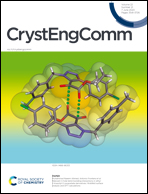MIL-88A@polyoxometalate microrods as an advanced anode for high-performance lithium ion batteries†
Abstract
Polyoxometalates (POMs), referred to as an “electron sponge”, have been used in electrocatalysts and energy storage and conversion devices because of their rich electrochemical properties. Herein, new MIL-88A@polyoxometalate microrods have been constructed via a simple one-step hydrothermal method. Compared with those of an unmodified MIL-88A battery, the lithium storage capacity, rate performance and cycling stability of the MIL-88A@polyoxometalate microrods have been greatly improved. As an advanced anode for high-performance lithium ion batteries, the MIL-88A@polyoxometalate microrods delivered a high reversible capacity of 1062.1 mA h g−1 after 100 cycles at 200 mA g−1. Even at a high rate of 1 A g−1 after 300 cycles, a specific capacity of 510.7 mA h g−1 could be still maintained without an evident decay, which is still much higher than that of the MIL-88A electrode (358 mA h g−1 at 1 A g−1 after 300 cycles). The improved performance is ascribed to the synergistic effect of the MIL-88A microrods as metal organic frameworks and polyoxometalates which could provide more redox sites and endow more lithium storage capacity.



 Please wait while we load your content...
Please wait while we load your content...